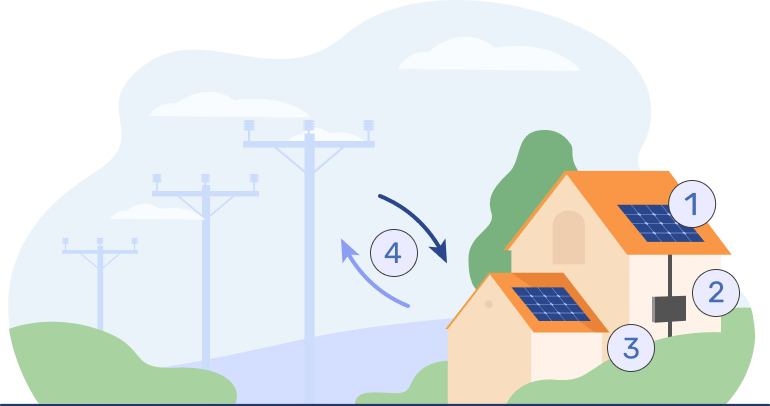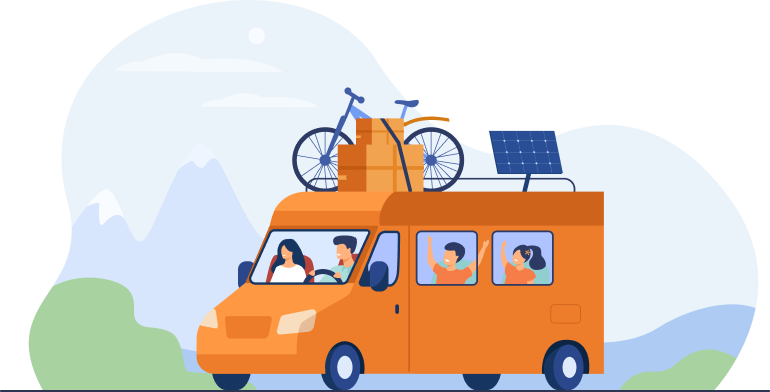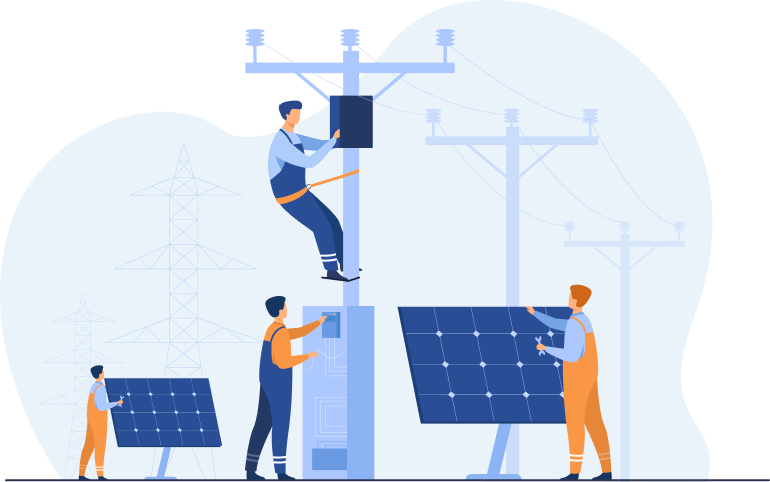Solar energy is quickly becoming a more popular and affordable power source for homeowners and businesses. With residential solar energy, you can lower your carbon footprint and see substantial cost savings.
How solar power works

- The Solar panels collect sunlight and turn it into DC energy
- The inverter converts DC electricity to AC
- The AC electricity is supplied to the building
- Excess energy flows into the grid, and electricity is drawn from the grid when the supply from solar panels is not sufficient
Solar panels for home

As more Americans express interest in green energy, many are taking a fresh look at how solar can meet their electricity needs. According to the EIA, residential solar has grown about 32 percent in the last decade. In many states, that means adding solar panels to the rooftops of homes and businesses.
Solar panels for RVs and campers

The solar industry has also adapted to go on the road. There are a variety of solar panels that also work for RVs and campers. RV solar panels work the same as residential solar systems, although they are typically smaller, more flexible, and have a lower generating capacity.
Cost of solar panels

According to the Center for Sustainable Energy, the average cost for a residential solar system ranges from $15,000 to $25,000. That’s a big chunk of money, but there are some ways to offset it.
Picking a solar panel installer

All solar installers aren’t created equal. That means you’ll have to ask a few questions of a company before you commit to a solar installation.
Top states for solar energy

Green energy offers several benefits to energy consumers – which is why it has been growing in popularity in recent years. One of the most important factors is energy independence. By investing in solar energy, residences can decrease their dependence on the electric grid, retain a steady supply of power during times of high demand, and possibly lower their energy costs over time.
If you want to learn more, click here.
Source: https://www.saveonenergy.com/solar-energy/

